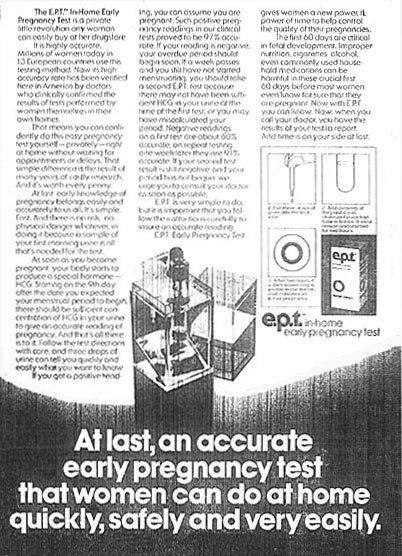...
| Div | ||||||||||||||||
|---|---|---|---|---|---|---|---|---|---|---|---|---|---|---|---|---|
| ||||||||||||||||
|
Whether a woman wants to be pregnant or not, she can now find out whether she is with startling accuracy, ease, and speed unimaginable to previous generations. Though her mother may not even have taken a pregnancy test, today, a woman can find out if she is pregnant four days before a missed period. A private little revolution, indeed.
...


